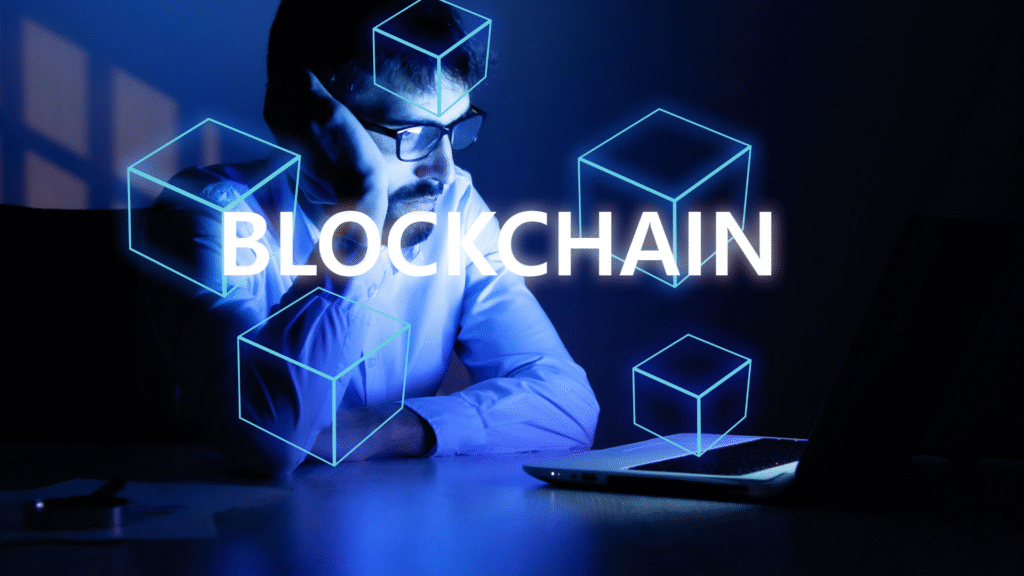Blockchain technology is making significant strides in the gaming industry, transforming how games are developed, played, and monetised. It enables true ownership of in-game assets, allowing players to buy, sell, and trade items securely, as well as providing developers with innovative ways to generate revenue and foster community engagement. This disruption comes at a time when players seek more control over their experiences and investments in digital worlds.
As blockchain continues to evolve, its applications in gaming extend beyond asset ownership. Game developers are exploring decentralised platforms that facilitate player-driven economies and create unique gameplay experiences. By integrating smart contracts, they can ensure transparent transactions, reduce fraudulent activities, and enhance trust within online gaming environments.
The intersection of blockchain and gaming presents exciting possibilities. Players can engage in experiences that not only entertain but also provide tangible benefits through unique digital assets. This technological advancement is reshaping the landscape, promising a more player-centric future in the gaming industry.
The Role Of Blockchain Technology In Gaming
Blockchain technology significantly enhances the gaming landscape by offering a framework for transparency, security, and genuine ownership of digital assets. Its decentralised nature reshapes how players interact with games and each other.
Transparency And Security
Blockchain provides a transparent, public ledger that records all transactions and activities within games. Each action, from asset transfers to in-game purchases, is securely logged. This transparency helps to combat fraud and ensures that players can verify the legitimacy of their in-game assets.
Enhanced security features, such as cryptographic encryption, protect players’ data and assets from hacking attempts. Decentralised storage systems mean that no single entity controls the information, reducing the risk of data breaches. This level of security fosters trust in gaming environments, encouraging players to engage more deeply with blockchain-based games.
Digital Asset Ownership And True Ownership
In traditional gaming, players purchase items but do not truly own them. Blockchain disrupts this paradigm by granting players genuine ownership of digital assets. Each in-game item, from weapons to skins, is represented by non-fungible tokens (NFTs) on the blockchain.
These tokens ensure that players can trade or sell their items outside the game’s original ecosystem. This true ownership extends the lifespan and value of in-game assets, allowing players to wield significant control over their virtual possessions. The ability to own, trade, and sell assets adds a new dimension to gaming, motivating players to invest in their gameplay experience.
Smart Contracts And Automated Processes
Smart contracts are self-executing contracts with terms directly written into code. In the gaming sector, they automate various processes, such as transactions, rewards distribution, and game mechanics.
For instance, a smart contract can automatically release a unique item to a player once they achieve a specified milestone. This level of automation reduces the need for intermediaries, streamlining transactions and enhancing user experience. Ultimately, smart contracts facilitate a secure and efficient gaming environment, allowing developers to create dynamic and responsive game mechanics.
Major Applications Of Blockchain In The Gaming Industry
Blockchain technology has significantly transformed the gaming industry by enhancing in-game economies, creating new monetisation models, and enabling interoperability across different games. These applications benefit both players and developers, leading to more engaging and financially sustainable gaming experiences.
NFTs And In-Game Economy
Non-fungible tokens (NFTs) play a pivotal role in the in-game economy. They represent unique digital assets allowing players to own, trade, and sell items securely on blockchain platforms. This ownership is verifiable, ensuring authenticity and scarcity.
Games such as Axie Infinity have adopted NFTs to let players buy characters and items, which can be traded for cryptocurrencies. This transition helps to create a dynamic marketplace where players can earn real-world value from in-game achievements.
Furthermore, integrating NFTs into game economies encourages user engagement, as players are incentivised to spend time in the game to enhance their collections and increase potential returns.
Play-To-Earn And Monetisation Models
The play-to-earn (P2E) model has revolutionised how players monetise their gaming experiences. Instead of merely purchasing games or in-game items, players can earn cryptocurrencies or tokens by participating in gameplay.
Games like The Sandbox and Decentraland implement this model, allowing users to create, own, and trade digital real estate or assets, generating income directly from their activities.
Monetisation strategies such as staking and yield farming also emerge within this framework, enabling players to earn rewards for taking part in ecosystem governance or liquidity provision. This creates a sustainable income avenue while enhancing user investment in the game’s success.
Interoperability And Cross-Game Assets
Interoperability allows players to use their assets across multiple games, enhancing the value of in-game items. Blockchain facilitates this by providing a common standard for asset creation and management.
For instance, gaming tokens or virtual items from one game can be seamlessly transferred and utilised in another, increasing their utility and ensuring players engage with multiple platforms.
This capability fosters a digital economy where assets are not limited to singular experiences, encouraging developers to create interconnected gaming environments. As a result, players benefit from broader opportunities to leverage their investments and enjoy varied gaming experiences across platforms.
Notable Blockchain Gaming Platforms And Games
The blockchain gaming market is rapidly evolving, with various platforms and games gaining traction. Key players are exploring innovative features, leading to significant growth in this sector, driven by the adoption of decentralised gaming and virtual worlds.
Key Players And Market Growth
Several companies play a pivotal role in the blockchain gaming landscape. Notable entities include Animoca Brands, Sky Mavis, and Dapper Labs, all of which focus on unique gaming experiences and technological advancements. This sector is expected to witness substantial growth, driven by increasing interest in cryptocurrencies and NFTs.
Current market trends suggest a rise in investment in blockchain gaming, with a projected market value reaching £3 billion by 2025. This growth is bolstered by mainstream adoption and innovations in-game mechanics, such as play-to-earn models and ownership of virtual assets.
Case Studies: Axie Infinity, Sandbox, And Decentraland
Axie Infinity is a leading example of success in blockchain gaming. It allows players to earn through battles and the breeding of creatures called Axies. The game’s ecosystem includes a marketplace for trading these NFTs, generating substantial revenue.
Sandbox and Decentraland represent emerging virtual worlds where users can buy, build, and monetise virtual land. These platforms utilise NFTs to ensure ownership and create an interactive environment for players and creators. Both have attracted significant investments, enhancing their sustainability and appeal in the gaming community.
Integration With Metaverse, AR, And VR
The integration of blockchain gaming with the metaverse, augmented reality (AR), and virtual reality (VR) is shaping a new frontier. Players can enjoy immersive experiences, leveraging technology to enhance gameplay and social interaction within these digital realms.
Platforms such as Enjin Coin are at the forefront of these advancements, facilitating the creation and management of virtual goods across multiple games. This cross-platform functionality fosters an interconnected ecosystem, enabling players to transfer assets seamlessly. Blockchain gaming’s synergies with AR and VR are likely to expand as technology continues to progress.
Challenges And The Future Of Blockchain In Gaming
The integration of blockchain technology in the gaming industry faces significant hurdles and holds promise for future advancements. Regulatory issues, innovative trends, and the dynamics of player engagement will play critical roles in shaping the path forward.
Regulatory And Compliance Issues
Regulatory challenges continue to pose significant obstacles for blockchain in gaming. Many jurisdictions lack clear guidelines regarding the use of cryptocurrencies and digital assets within games. This uncertainty complicates the industry’s ability to secure funding and achieve mainstream adoption.
Compliance with anti-money laundering (AML) and know-your-customer (KYC) regulations also creates complexity. Game developers must navigate these intricate requirements to avoid potential legal repercussions. Additionally, concerns connected to gambling laws surface, particularly in blockchain-based games that incorporate aspects of wagering or staking.
Innovation And Emerging Trends
Innovation is vital for the sustained growth of blockchain in gaming. Recent trends show an increasing interest in decentralised finance (DeFi) and its integration into game economies. Players can earn and participate in various financial activities, enhancing their in-game experience.
The rise of decentralised autonomous organisations (DAOs) is noteworthy. DAOs empower players to have a say in game development and governance, potentially increasing player retention. The incorporation of artificial intelligence also shows promise, enhancing gameplay and personalising user experiences, thus driving further engagement.
Player Engagement And Game Dynamics
Player engagement is crucial in determining the success of blockchain games. The unique attributes of blockchain, such as true ownership of in-game assets and secure transactions, can create a more compelling gameplay experience. These features may attract a broader audience and increase player retention.
Game dynamics are evolving as a result of blockchain technology. Developers need to balance accessibility with the complexity of blockchain integrations. Ensuring a seamless user experience is essential to avoid alienating new players. Cheating remains a concern; however, blockchain can enhance security by providing transparent and verifiable game mechanics.

